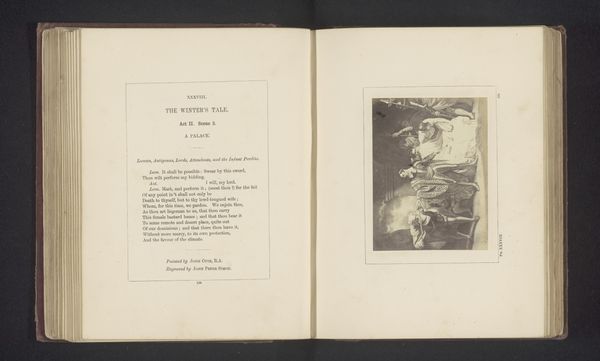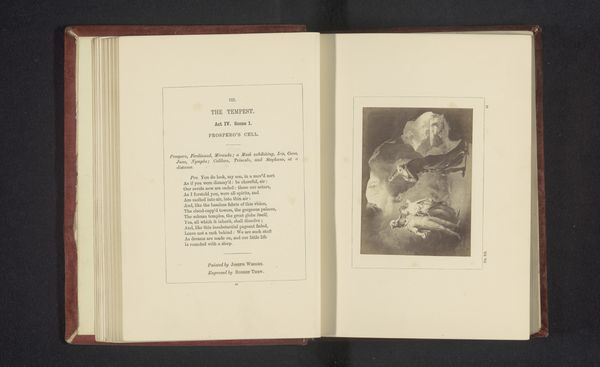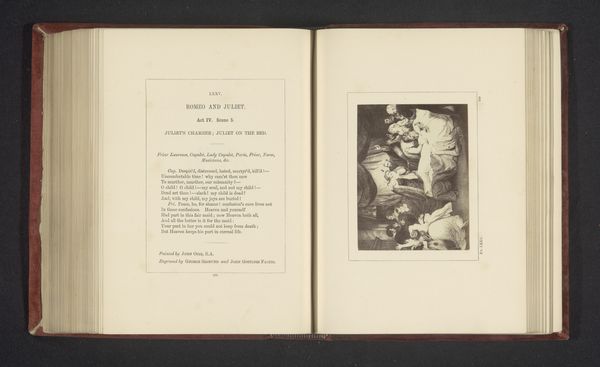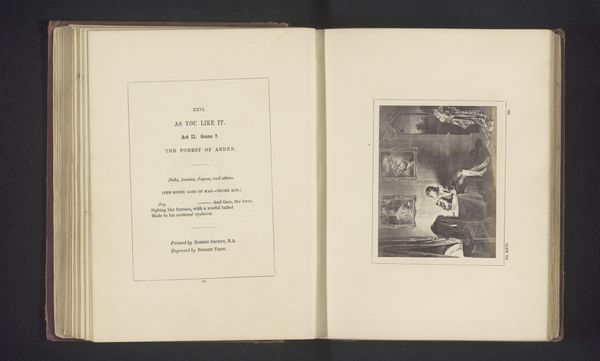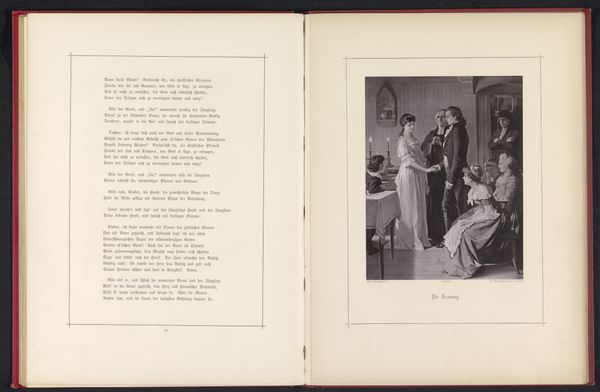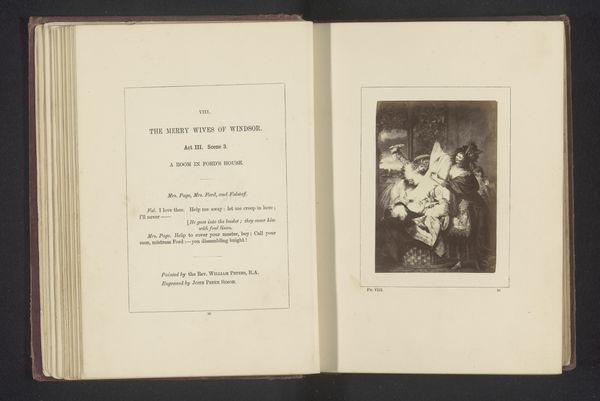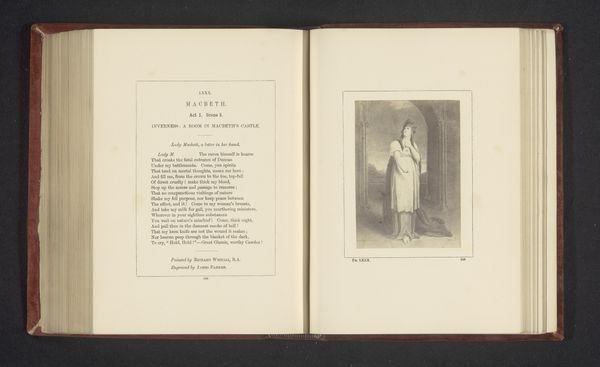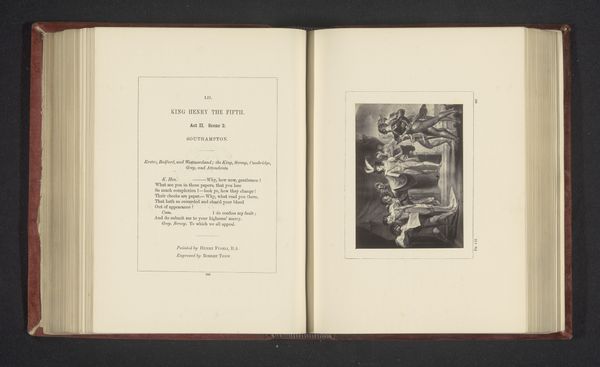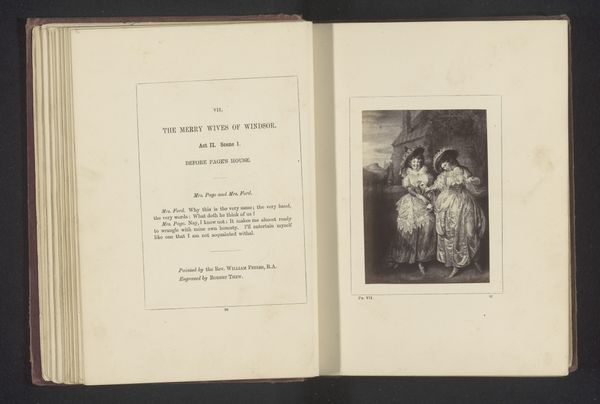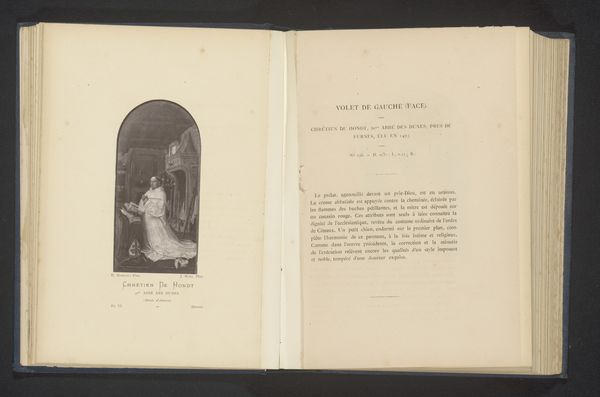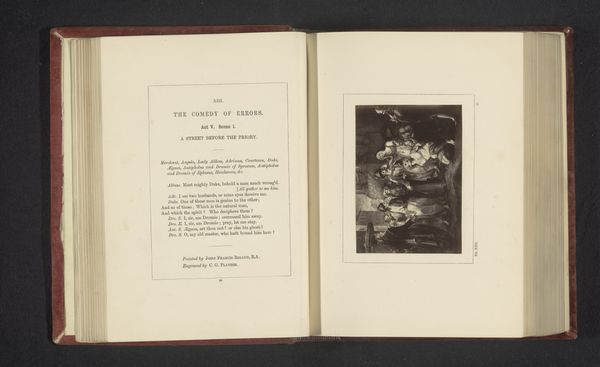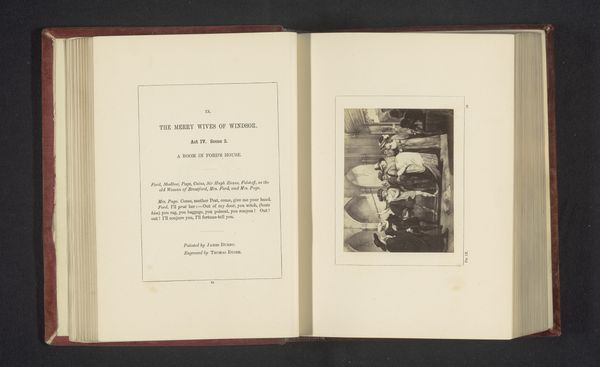
Fotoreproductie van een prent naar een schilderij door Robert Smirke, voorstellend een scene uit De koopman van Venetië door William Shakespeare before 1864
0:00
0:00
Dimensions: height 101 mm, width 73 mm
Copyright: Rijks Museum: Open Domain
Curator: Here we see an image of an open book, with text on the left-hand side and a reproduction of artwork on the right. This reproduction, an engraving, is taken from a painting by Robert Smirke and it depicts a scene from Shakespeare’s play, "The Merchant of Venice." The print dates to before 1864. Editor: It feels very staged, theatrical even. I see the composition, the use of line to suggest volume, but also the sense that this is about representing an ideal of the scene, rather than something raw. I mean, just look at the almost photographic detail in the clothing and surrounding space. Curator: Well, that speaks to the role engravings played in disseminating cultural capital at the time. Reproductions like these made theatrical productions and literary scenes accessible to a wider audience beyond the elite theatre-goers. Think about the production process here: Smirke created an image of the scene; that image was then engraved, printed, and distributed as part of this publication. Laborious. Editor: Absolutely. But the layering of representation is what grabs me. It is not just a picture; it is a record of choices, preferences. Consider the paper it’s printed on – how its very existence speaks volumes of its original context of viewing and intended purpose in circulating this theatrical image. And of course, the class connotations tied to print ownership itself! Curator: Precisely. And the choice of this particular scene surely reinforces certain social values. A scene from Shakespeare elevates both the material object--the printed book—and its consumers. This is a public endorsement of canonical literature, intertwined with notions of status and taste. Editor: Seeing how meticulously it has been created really provides context for how Shakespeare’s dramas were becoming part of popular culture via printed imagery, not just through theatre. I had never truly understood the role these publications served in solidifying the socio-economic power. Curator: It is true, this exercise underscores how social structures mediate our access to and understanding of art. And the lifecycle of this print– its production, distribution, and reception – is quite an intriguing lens.
Comments
No comments
Be the first to comment and join the conversation on the ultimate creative platform.

